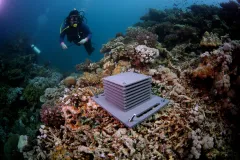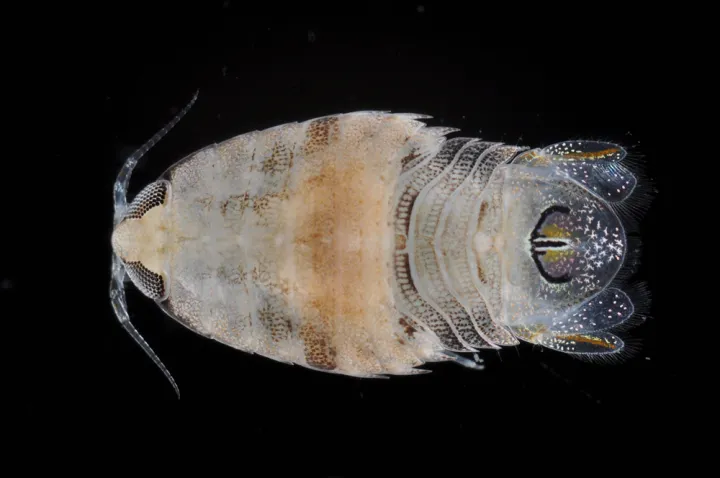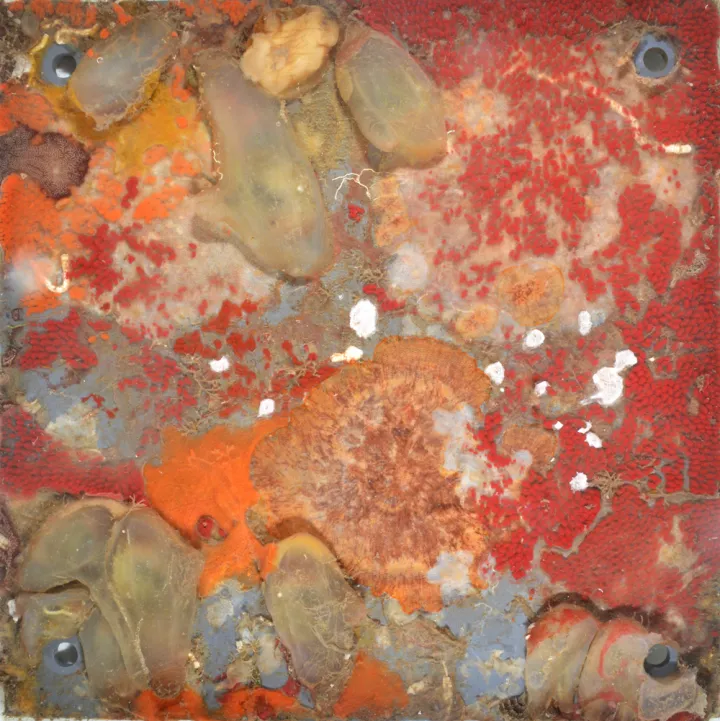Worth the Investment: Ocean Real Estate Reveals Hidden Diversity

Good real estate is hard to find. This is as true underwater as it is on land. So when Smithsonian scientist Dr. Matthieu Leray built 18 potential homes for undersea creatures living on oyster reefs, they moved in fast. After just six months in the water, Dr. Leray counted more than 2,000 different types of organisms—most of them very small—living in his small underwater “condos,” which were placed in a variety of locations including the Chesapeake Bay and the Indian River Lagoon in southeast Florida.
These condos were designed with tiny critters in mind. Each underwater dwelling consists of a stack of ten square plastic plates, spaced a half-inch apart, allowing marine organisms to attach to the plates and nestle between them. This roughly mimics the nooks and crannies of oyster reefs, without the sharp edges and irregular shapes that make actual oysters hard to study. Scientists call the condos ARMS, which stands for Autonomous Reef Monitoring Structures.
Once the creatures move in, the task of identifying thousands of species can be a daunting one. Dr. Leray got around this problem by using “DNA barcoding,” which allows scientists to identify species from their DNA. He used powerful new DNA sequencing techniques that allow scientists to get many thousands of sequences from a single sample. He was able to analyze nearly a million DNA sequences for the study by taking the organisms and turning them into a “genetic smoothie” of sorts. (Find out more about a similar project on the island of Moorea.)
The most common kinds of organisms found were crustaceans—shrimps, crabs, and their relatives. There were also lots of worms, sponges, and a host of other kinds of ocean creatures. The vast majority of these organisms were smaller than 2 mm (about 1/16th of an inch) in size, and barely visible to the naked eye. Less than 15 percent of the sequences could be matched to any named organism in the world’s large genetic databases, despite the fact that they came from well-studied parts of the coastal ocean. This shows that a lot of work remains to be done growing these databases so that the results of large DNA sequencing studies can be connected to the biology of known organisms.
This begs the question—just how much more diversity can be documented using these condos? It is hard to predict how the numbers will increase with future surveys, but ten years from now it seems safe to assume that two thousand species will be a drop in the bucket. Hundreds of ARMS have been deployed across the world’s oceans—from shallow water to 700 feet on the deep reefs of Curaçao, and from Brazil to the Indian Ocean. They are a key component of Smithsonian’s recently established Tennenbaum Marine Observatory Network, and complement the Smithsonian’s commitment to barcoding and the growing field of biogenomics.
These new methods provide a way to quickly and efficiently take a snapshot of biodiversity in any marine habitat, allowing scientists to gain a better understanding of a variety of communities and the animals who call them home. This approach can also play a critical role in conservation, helping us to keep track of how ocean organisms are responding to the ocean as it changes at an ever more rapid rate and letting us know when our efforts to improve ocean health are working.



